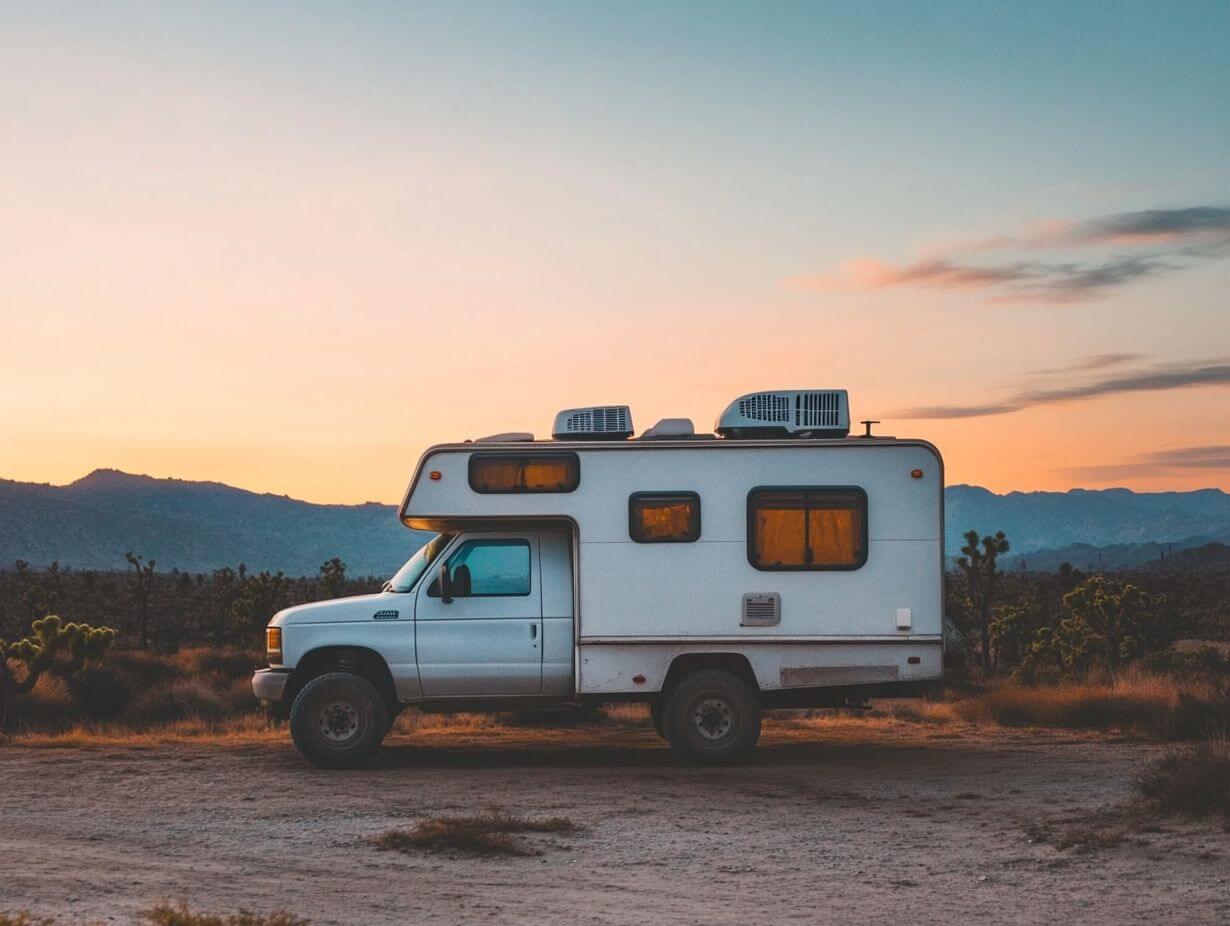Joshua Tree National Park stands as a testament to the raw beauty of the California desert, where unique Joshua trees stretch toward vast desert skies and massive granite formations create an otherworldly landscape.
For outdoor enthusiasts and nature lovers, camping in Joshua Tree National Park offers an unparalleled opportunity to immerse yourself in this distinctive environment, whether you’re seeking world class rock climbing, spectacular hiking trails, or simply a peaceful desert escape.
This guide will help you navigate everything you need to know about camping in one of America’s most fascinating national parks.
Campgrounds In Joshua Tree National Park
Looking to spend a night under the stars in Joshua Tree? You’re in luck. The park offers eight distinct campgrounds, each with its own charm and character. From stargazing havens to rock climber paradises, here’s what you need to know about each spot.
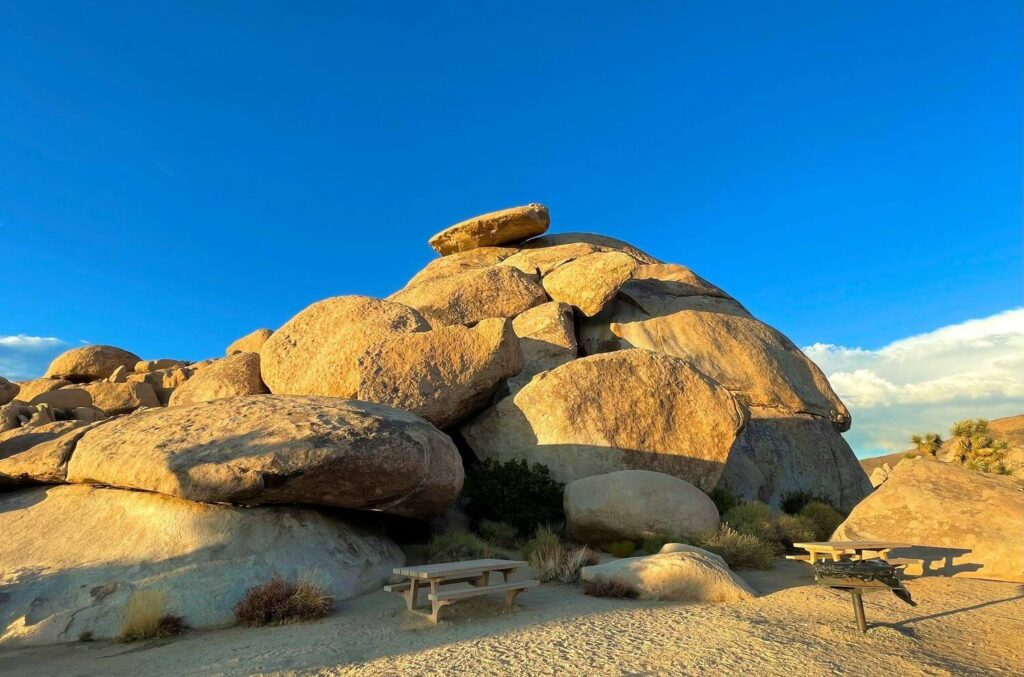
1. Belle Campground
Seeking an extraordinary stargazing experience? Belle Campground, situated at a cool 3,800 feet elevation, might just be your perfect match. Located six miles from the north entrance near Twentynine Palms off Pinto Basin Road, this tranquil retreat offers a secluded camping experience away from busier park areas.
The amenities are basic: pit toilets, picnic tables, and fire pits, plus trash and recycling collection. The real draw here is the pristine night sky. The higher elevation provides relief from desert heat and creates ideal conditions for astrophotography. Remember to pack plenty of water, as none is available onsite.
2. Black Rock Campground
Nestled in the northwest corner of Joshua Tree National Park, just south of Yucca Valley, Black Rock Campground stands out as one of the park’s more amenity rich destinations. This family friendly campground offers the creature comforts many campers appreciate, including potable water, flush toilets, picnic tables, fire rings, and grills.
What really sets Black Rock apart is its strategic location and accessibility to numerous hiking trails that wind through the desert landscape. The campground serves as an excellent base camp for exploring the surrounding area, with trails suitable for both casual walkers and ambitious hikers.
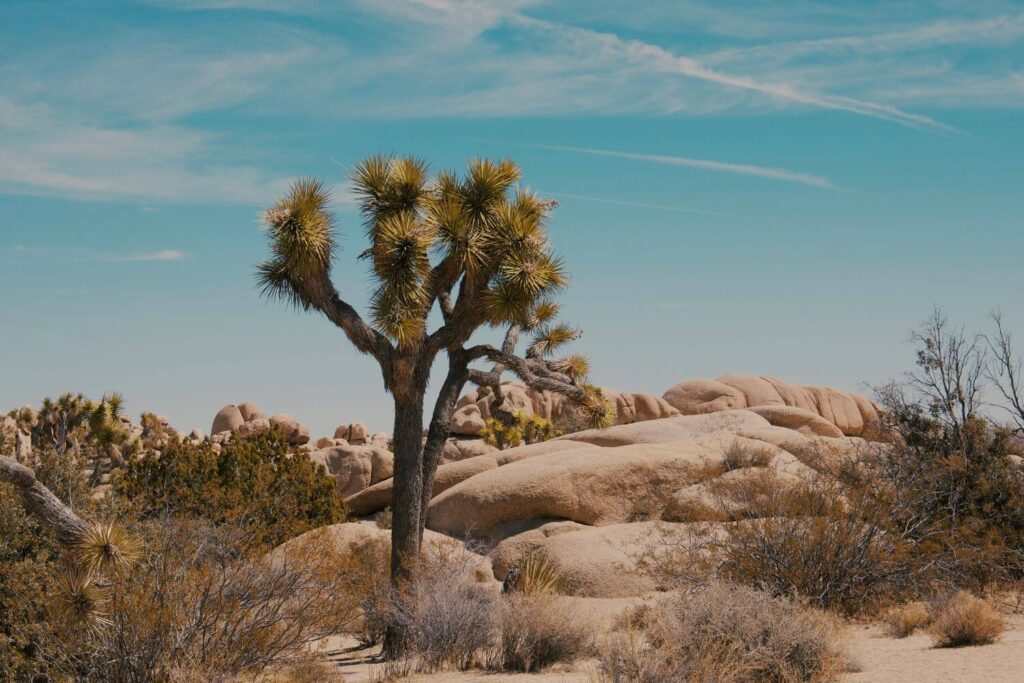
3. Cottonwood Campground
Positioned near the south entrance of Joshua Tree National Park, Cottonwood Campground offers a well rounded camping experience with some of the best amenities in the park. This welcoming campground provides essential facilities including flush toilets, potable water, picnic tables, fire rings, and an RV dump station.
Its lower elevation typically means warmer temperatures than other park campgrounds, making it an ideal winter camping destination. The area is renowned for its spectacular wildflower displays during spring blooms. The surrounding mountain views create a dramatic backdrop for your camping adventure.
4. Hidden Valley Campground
Hidden Valley Campground sits at what many consider the heart of Joshua Tree’s climbing community, positioned near the intersection of Barker Dam Road and Park Boulevard. The amenities are simple: picnic tables, fire rings, and pit toilets, with no potable water available.
This campground serves as a perfect base camp for rock climbing enthusiasts, with numerous world class climbing routes just a short walk away. Even if you’re not a climber, the surrounding desert scenery provides an incredible backdrop. The landscape feels otherworldly, with massive boulder formations creating a natural playground for exploration.
5. Indian Cove Campground
Indian Cove Campground offers a unique camping experience among some of Joshua Tree’s most impressive rock formations near Twentynine Palms. The amenities include picnic tables, fire rings, and vault toilets, but no potable water. The campground is surrounded by massive rock formations that glow at sunset, creating a mystical atmosphere.
Rock climbers flock here for the excellent nearby routes, but you don’t need to be a climber to appreciate the beauty. The resident nature trail provides an excellent introduction to desert flora and fauna, while the surrounding area offers countless opportunities for hiking.
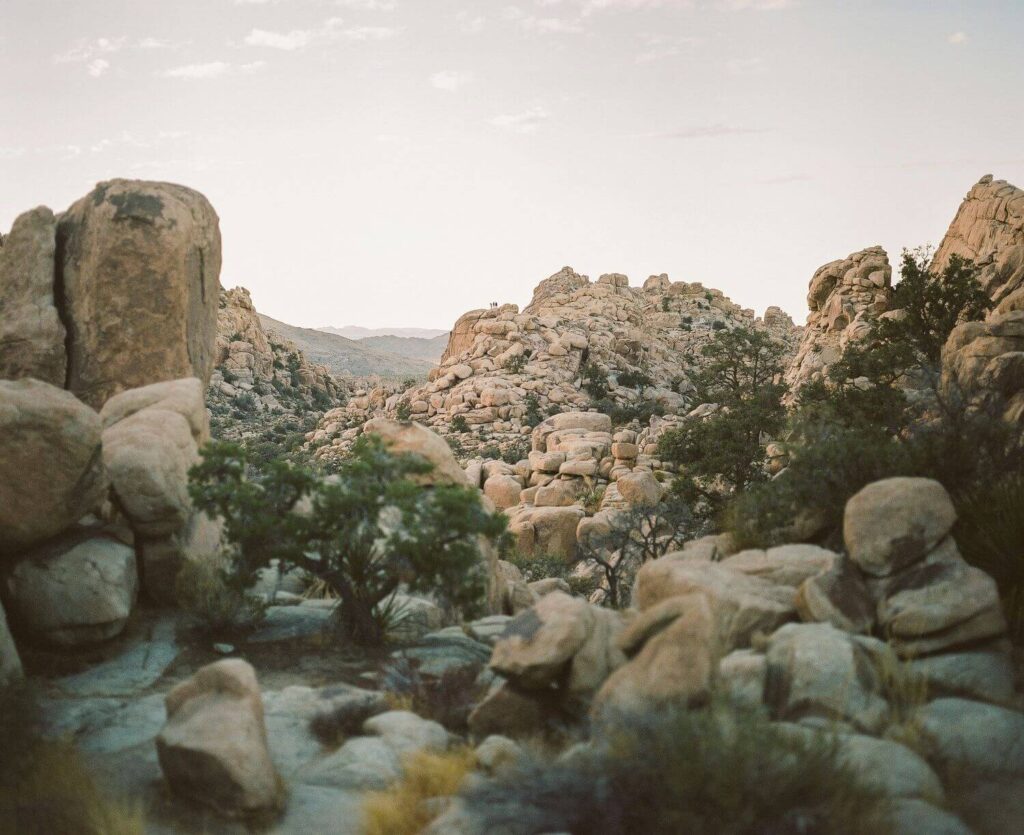
6. Jumbo Rocks Campground
Jumbo Rocks Campground sits amid a wonderland of massive boulder formations that define this section of Joshua Tree National Park. Located along Park Boulevard, this popular campground offers a solid mix of amenities, including concrete picnic tables, fire pits, grills, pit toilets, and garbage facilities.
The real draw here is the surrounding landscape. Massive rock formations create a natural playground for exploration and photography, with famous Skull Rock just a short walk away. The campground’s central location makes it an ideal base for exploring various park attractions, while the granite boulders provide natural wind protection.
7. Ryan Campground
Ryan Campground offers a perfect blend of accessibility and desert solitude, situated near iconic Ryan Mountain and Cap Rock. The amenities are simple: fire rings, picnic tables, and pit toilets, with no potable water available.
What sets Ryan apart is its unique position as one of the few campgrounds offering equestrian facilities. The surrounding area features a network of hiking trails, including access to Ryan Mountain, which offers some of the most panoramic views in the park. The campground’s elevation provides cooler temperatures than lower lying areas, while the relatively small size creates an intimate experience.
8. White Tank Campground
White Tank Campground, nestled among distinctive granite rock formations on the northeastern side of the park, offers one of Joshua Tree’s more intimate camping experiences. The campground provides basic amenities: pit toilets, picnic tables, and fire pits, but no potable water.
The surrounding granite formations create natural barriers between campsites, offering more privacy than many other campgrounds. The proximity to Arch Rock provides easy access to one of the park’s most photographed features. At night, the lack of artificial light creates some of the darkest skies in the park.
Best Times Camp In Joshua Tree
Spring brings the magic of Joshua Tree to life, with comfortable temperatures and vibrant wildflower displays painting the desert landscape from March through May.
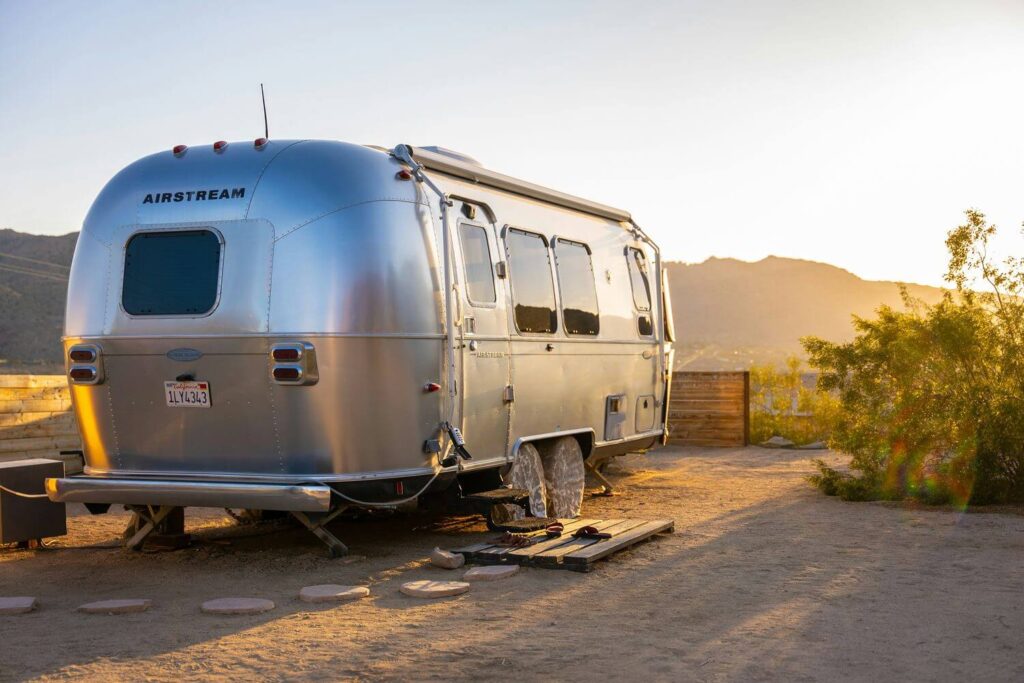
If you prefer to avoid peak crowds (like we do), consider an autumn visit during October and November, when daytime temperatures hover around a pleasant 80°F and nights cool to around 50°F, perfect for gathering around the campfire.
Essential Planning Tips
Before setting up camp in Joshua Tree, you’ll want to prepare for a more rustic experience. Most campgrounds offer primitive facilities, primarily pit toilets, and you won’t find shower facilities anywhere within the park boundaries. RV campers should note that hookups aren’t available, so come prepared for dry camping.
Getting a campsite requires some advance planning, especially during the peak season from September through May. Most campgrounds require advance reservations, and spots fill quickly during popular times. While some first come, first served options exist, they’re limited and can be difficult to secure during busy periods.
Activities & Exploration
Camping in Joshua Tree offers endless opportunities for outdoor adventure and natural discovery. Photographers flock here for the incredible landscape photography opportunities, from dramatic boulder formations to delicate desert flora. When night falls, the dark skies provide spectacular stargazing conditions that draw astronomy enthusiasts from around the world (this is one of our favorite things about the park).
The park’s extensive network of hiking trails caters to all skill levels, while world class climbing routes attract rock enthusiasts year round. Wildlife observers will find plenty to discover, from resident birds to desert wildlife that becomes active during twilight hours.
Safety Considerations
The desert environment demands respect and careful preparation. Temperature swings can be extreme, often varying dramatically between day and night. Water sources within the park are extremely limited, so always carry more than you think you’ll need.
During certain seasons, particularly summer and winter, strong winds can sweep through the park with little warning. Additionally, while rare, flash floods can occur during rainy periods, especially in slot canyons and wash areas. Stay informed about weather conditions and always have a backup plan.
Closing Thoughts
Whether you’re a first time visitor or a seasoned Joshua Tree camper, the park’s diverse campgrounds and endless opportunities for adventure make every visit unique. The key to an unforgettable experience lies in choosing the right campground for your needs and arriving prepared for desert camping.
With proper planning and respect for the desert environment, you’ll discover why Joshua Tree National Park remains one of the most beloved camping destinations in the American Southwest.
